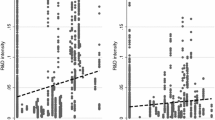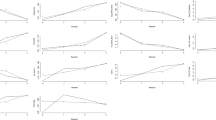Abstract
Because R&D conducted in electronics and chemistry has made significant contributions to South Korean economic development, past strategies in technology developments in these fields are addressed. The possibility of capturing national technology strategy and policy characteristics from patent analyses is explored. For the analysis, data were analyzed from 557 US patents in electronics and 108 US patents in chemistry, registered by Korean inventors, between 1989 and 1992. Descriptive statistics of aggregated patent information were equivalently mapped to each strategy in the two fields. Industry-specific features and past technology strategies in electronics and chemistry are identified. Electronics was driven by the private sector, while chemistry was driven by the public sector. Inventors in both fields are seeking clustered innovation on which subsequent innovation can be accumulated and/or applied to numerous heterogeneous fields. Contrary to the stated assumption, many Korean electronic innovations were based on scientific outputs such as papers. Of the knowledge strategy variables, size of invention and number of heterogeneous classifications are considered to be an important factor that affects patent citation counts in both fields.
Similar content being viewed by others
References
Arundel, A. (2001). The relative effectiveness of patents and secrecy for appropriation. Research Policy, 30, 611–624.
Carpenter, M. P., Narin, F., & Woolf, P. (1981). Citation rates to technologically important patents. World Patent Information, 3(4), 160–163.
Kim, L. (1998). Crisis construction and organizational learning: Capability building in catching-up at Hyundai motor. Organization Science, 9(4), 86–100.
Klevoric, A. K., Levin, R. C., Nelson, R. R., & Winter, S. G. (1995). On the sources and significance of interindustry differences in technological opportunities. Research Policy, 24, 185–205.
Lambert, D. (1992). Zero-inflated poisson regression, with an application to defects in manufacturing. Technometrics, 34, 1–14.
Lanjouw, J. O., Pakes, A., & Putnam, J. (1998). How to count patents and value intellectual property: The uses of patent renewal and application data. Journal of Industrial Economics, 46(4), 405–432.
Lee, Y.-G. (2008). Patent licensability and life: A study of U. S. patents registered by South Korean public research institutes. Scientometrics, 75(3), 463–471.
Lee, Y.-G., Lee, J.-D., Song, Y.-I., & Lee, S.-J. (2007). An in-depth empirical analysis of patent citation counts using zero-inflated count data model: The case of KIST. Scientometrics, 70(1), 27–39.
Lee, K., Lim, C., & Song, W. (2005). Emerging digital technology as a window of opportunity and technological leapfrogging: Catch-up in digital TV by the Korean firms. International Journal of Technology Management, 29(1–2), 40–63.
Lee, Y.-G. (2009) What affects a patent’s value? An analysis of variables that affect technological, direct economic, and indirect economic value: An exploratory conceptual approach, Scientometrics, 79(3).
Lundvall, B. (2006, Dec 1), Innovation system research and policy: Where it came from and where it go, In The 2nd international forum on technology foresight and national innovation strategies (held by KISTEP), (pp. 91–144), Seoul.
Murray, F., & Stern, S. (2007). Do formal intellectual property rights hinder the free flow of scientific knowledge? An empirical test of the anti-commons hypothesis. Journal of Economic Behavior and Organization, 63, 648–687.
Nonaka, I. (1994). A dynamic theory of organizational knowledge creation. Organization Science, 5(1), 14–37.
Owen-Smith, J., & Powell, W. W. (2001). To patent or not: Faculty decisions and institutional success at technology transfer. The Journal of Technology Transfer, 26, 99–114.
Pavitt, K. (1984). Sectoral patterns of technical change: Towards a taxonomy and a theory. Research Policy, 13, 343–373.
Trajtenberg, M. (1990). A penny for your quotes: Patent citations and the value of innovations. RAND Journal of Economics, 20, 172–187.
Vuong, Q. (1989). Likelihood ratio tests for model selection and non-nested hypothesis. Econometrica, 57, 307–334.
Author information
Authors and Affiliations
Corresponding author
Rights and permissions
About this article
Cite this article
Lee, YG. Sectoral strategic differences of technological development between electronics and chemistry: a historical view from analyses of Korean-invented US patents during the period of 1989–1992. Scientometrics 82, 83–92 (2010). https://doi.org/10.1007/s11192-009-0052-8
Received:
Accepted:
Published:
Issue Date:
DOI: https://doi.org/10.1007/s11192-009-0052-8




